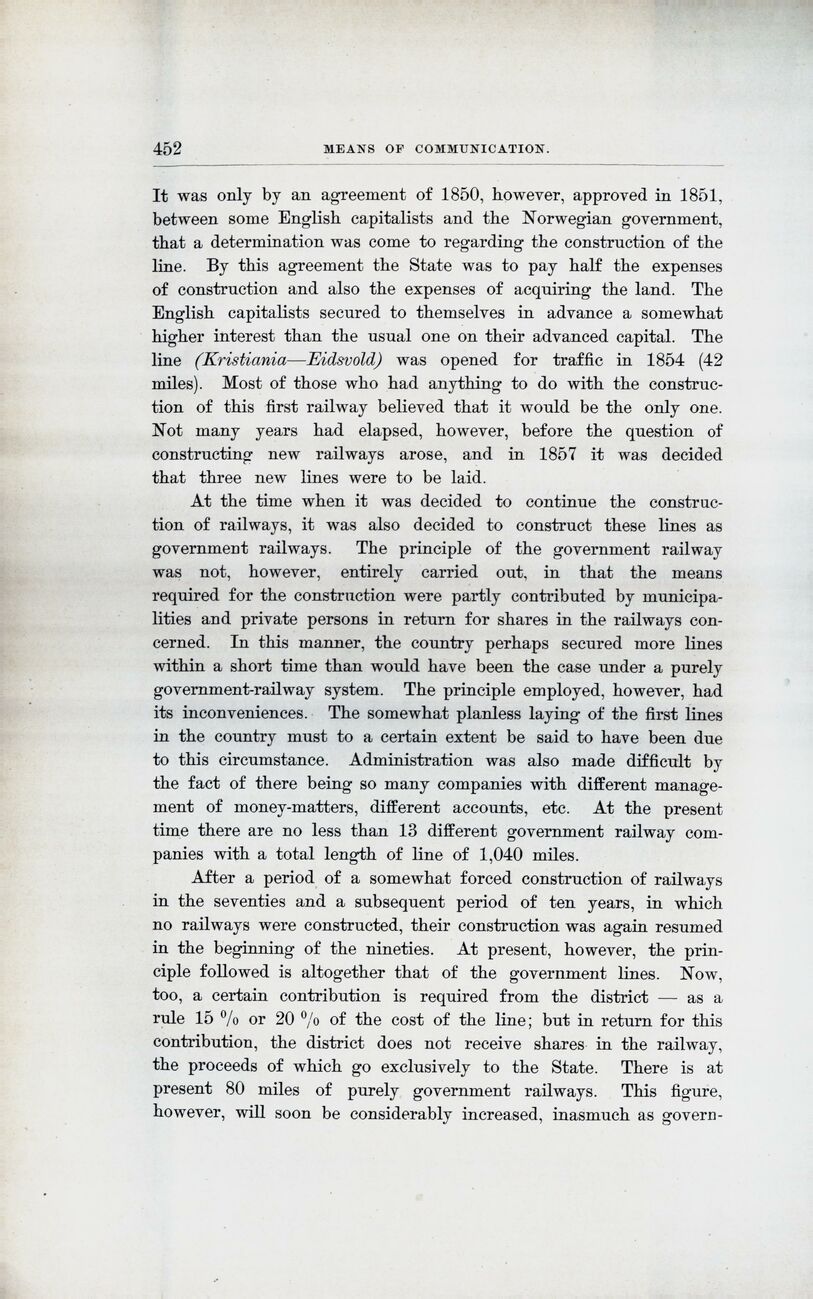
Full resolution (JPEG) - On this page / på denna sida - Means of Communication, by Bernh. Andersen, Andr. M. Hansen and J. T. Sommerschild

<< prev. page << föreg. sida << >> nästa sida >> next page >>
Below is the raw OCR text
from the above scanned image.
Do you see an error? Proofread the page now!
Här nedan syns maskintolkade texten från faksimilbilden ovan.
Ser du något fel? Korrekturläs sidan nu!
This page has been proofread at least once.
(diff)
(history)
Denna sida har korrekturlästs minst en gång.
(skillnad)
(historik)
It was only by an agreement of 1850, however, approved in 1851,
between some English capitalists and the Norwegian government,
that a determination was come to regarding the construction of the
line. By this agreement the State was to pay half the expenses
of construction and also the expenses of acquiring the land. The
English capitalists secured to themselves in advance a somewhat
higher interest than the usual one on their advanced capital. The
line (Kristiania—Eidsvold) was opened for traffic in 1854 (42
miles). Most of those who had anything to do with the
construction of this first railway believed that it would be the only one.
Not many years had elapsed, however, before the question of
constructing new railways arose, and in 1857 it was decided
that three new lines were to be laid.
At the time when it was decided to continue the
construction of railways, it was also decided to construct these lines as
government railways. The principle of the government railway
was not, however, entirely carried out, in that the means
required for the construction were partly contributed by
municipalities and private persons in return for shares in the railways
concerned. In this manner, the country perhaps secured more lines
within a short time than would have been the case under a purely
government-railway system. The principle employed, however, had
its inconveniences. The somewhat planless laying of the first lines
in the country must to a certain extent be said to have been due
to this circumstance. Administration was also made difficult by
the fact of there being so many companies with different
management of money-matters, different accounts, etc. At the present
time there are no less than 13 different government railway
companies with a total length of line of 1,040 miles.
After a period of a somewhat forced construction of railways
in the seventies and a subsequent period of ten years, in which
no railways were constructed, their construction was again resumed
in the beginning of the nineties. At present, however, the
principle followed is altogether that of the government lines. Now,
too, a certain contribution is required from the district — as a
rule 15 % or 20 % of the cost of the line; but in return for this
contribution, the district does not receive shares in the railway,
the proceeds of which go exclusively to the State. There is at
present 80 miles of purely government railways. This figure,
however, will soon be considerably increased, inasmuch as
<< prev. page << föreg. sida << >> nästa sida >> next page >>